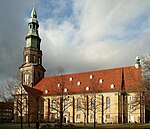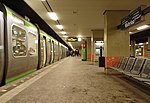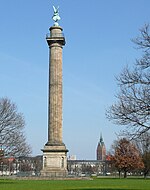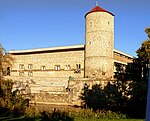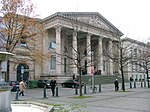Hanover-Mitte
Boroughs and quarters of HanoverPages including recorded pronunciations
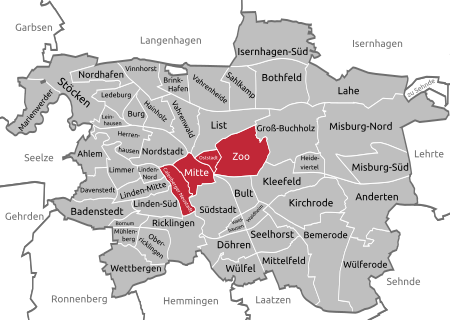
Mitte ([mɪtə]listen ; English: Middle) is the first borough of Hanover, the state capital of Lower Saxony. As of 2020, it has 36,645 inhabitants and consists of the quarters Mitte (10,554 inh.), Calenberger Neustadt (7,004 inh.), Oststadt (14,135 inh.) and Zoo (4,952 inh.). The district mayor is Cornelia Kupsch (CDU).
Excerpt from the Wikipedia article Hanover-Mitte (License: CC BY-SA 3.0, Authors, Images).Hanover-Mitte
Wagenerstraße, Hanover Calenberger Neustadt (Centre)
Geographical coordinates (GPS) Address Nearby Places Show on map
Geographical coordinates (GPS)
| Latitude | Longitude |
|---|---|
| N 52.369722222222 ° | E 9.7269444444444 ° |
Address
Wagenerstraße 11
30169 Hanover, Calenberger Neustadt (Centre)
Lower Saxony, Germany
Open on Google Maps
